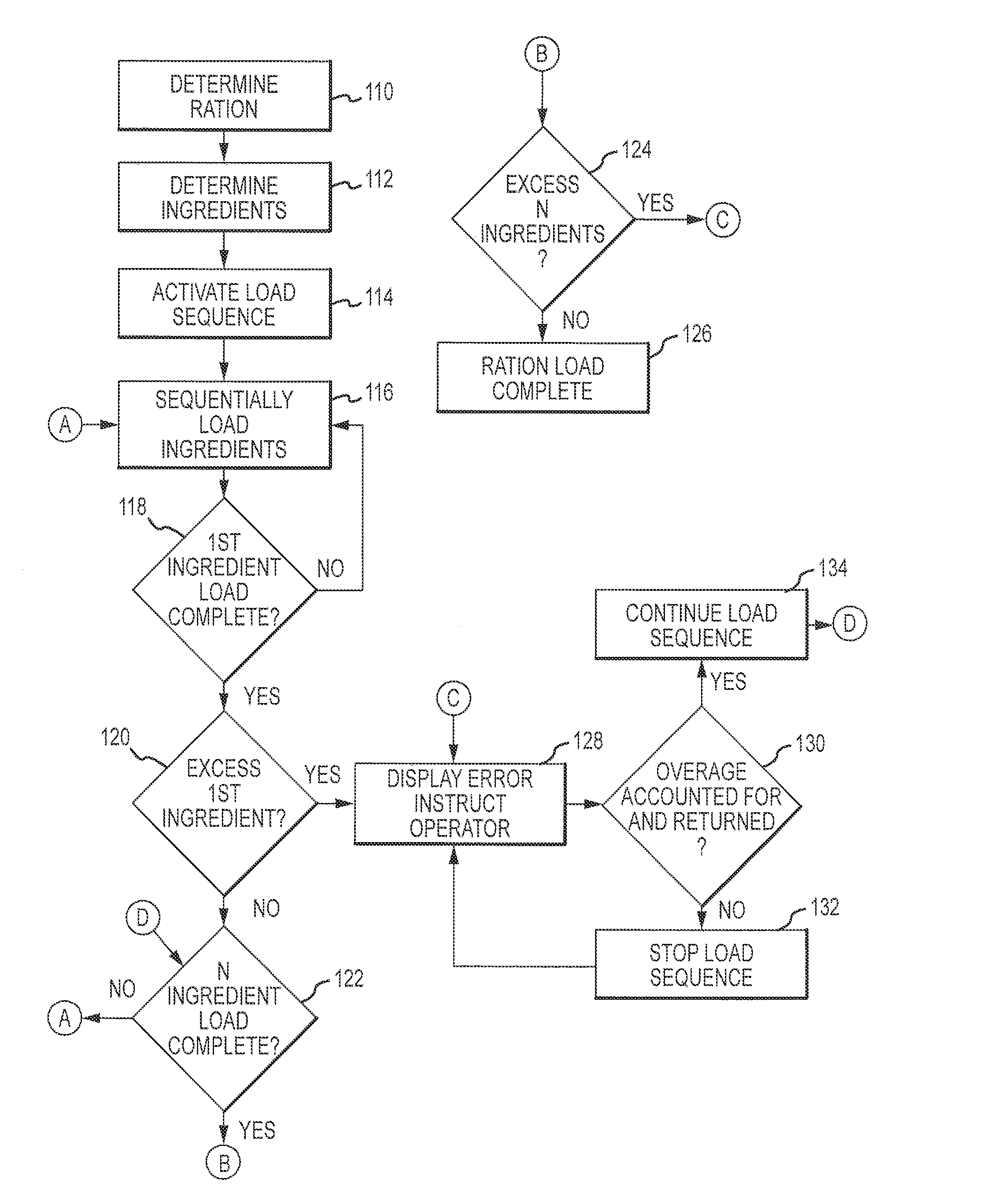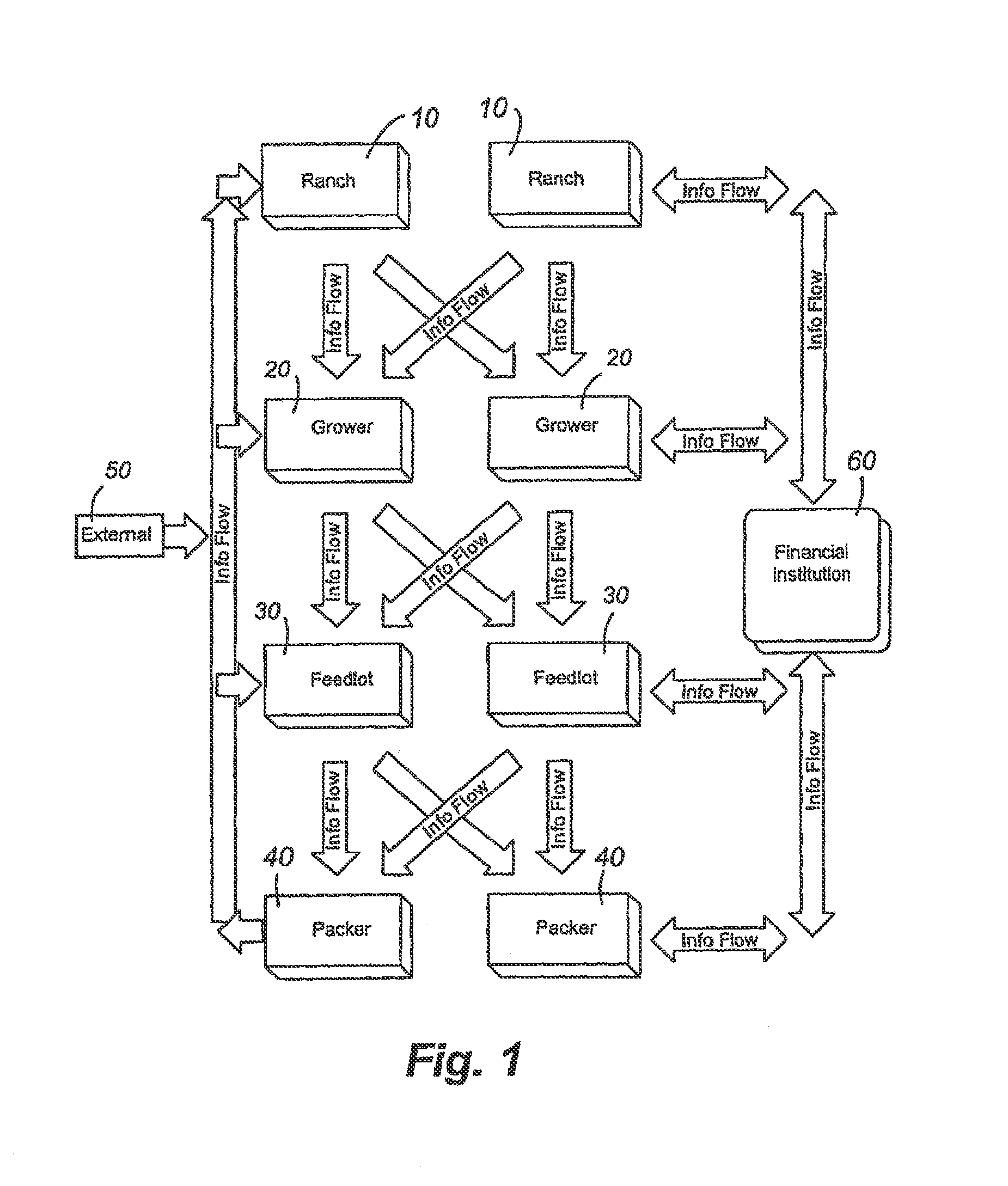System and method for control of commodities inventory for animal feed rations
a technology for animal feed and commodities, applied in the field of animals management, can solve the problems of contaminating the next load, affecting the quality of animal feed, and affecting the quality of animal feed, and achieve the effect of improving the inventory control
- Summary
- Abstract
- Description
- Claims
- Application Information
AI Technical Summary
Benefits of technology
Problems solved by technology
Method used
Image
Examples
Embodiment Construction
[0033]A system overview is provided in FIGS. 1-4 discussed below. These figures also appear in the Applicant's prior U.S. Pat. No. 7,543,549. Applicant hereby incorporates by reference this prior patent for purposes of disclosing a general data processing system and basic functionality associated with the same as it applies to the loading and ingredient management of the present invention.
[0034]First referring to FIG. 1, an information flow diagram is provided showing the basic flow of information / data within the data processing system and the organizations that generate, transfer and receive information. Beginning with a ranch or cow / calf operation 10, information is generated and may be transferred to one or more intermediate grower operations 20. The growers generate and transfer information to the feedlots 30. The feedlots 30 generate and transmit information to the packers 40. Information may also be generated and transferred from external sources 50 and integrated within the i...
PUM
 Login to View More
Login to View More Abstract
Description
Claims
Application Information
 Login to View More
Login to View More - R&D
- Intellectual Property
- Life Sciences
- Materials
- Tech Scout
- Unparalleled Data Quality
- Higher Quality Content
- 60% Fewer Hallucinations
Browse by: Latest US Patents, China's latest patents, Technical Efficacy Thesaurus, Application Domain, Technology Topic, Popular Technical Reports.
© 2025 PatSnap. All rights reserved.Legal|Privacy policy|Modern Slavery Act Transparency Statement|Sitemap|About US| Contact US: help@patsnap.com



